#Pulp Novels
Explore tagged Tumblr posts
Text
The Evil Little Hairy Cave People of Europe in Pulp Fiction

From the 1900s to the 1940s, there was a trendy theme in occult and horror stories that the explanation for widespread European legends of fairies, brownies, pixies, leprechauns and other malicious little people, was that they were a hereditary racial memory of the extremely small non-human, hairy stone age original inhabitants of Europe, who still survive well into modern times in caves and barrows below the earth. Envious of being displaced on the surface, these weird creatures, adapted to the darkness of living underground and unable to withstand the sun, still mean mischief and occasionally go out at night to capture someone.... usually an attractive woman....to take to their dark caves for human sacrifice.
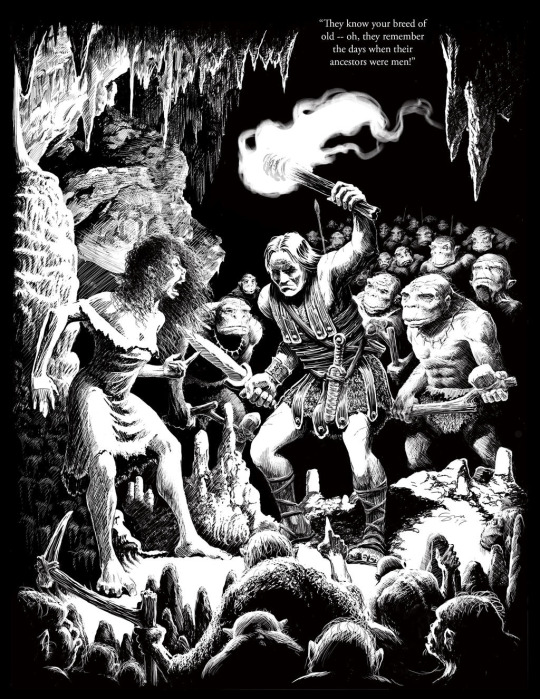
Displaced by the arrival of Indo-European language speakers at the dawn of the Bronze Age, these original, not quite human stone age people of Europe were driven deep underground into caves and barrows below the earth, where they went mad, adapted to the darkness and acquired a fear of daylight, became extremely inbred, in some cases acquired widespread albinism. It is these strange little people who gave the descendants of Europeans a haunting racial dread of places below the earth like mines and caves, and it also is these strange, hairy troglodytes who originally built the uncanny and mysterious menhir, fairy rings, and stone age structures of England, Scotland, and Ireland that predate the coming of the Celts and Romans.
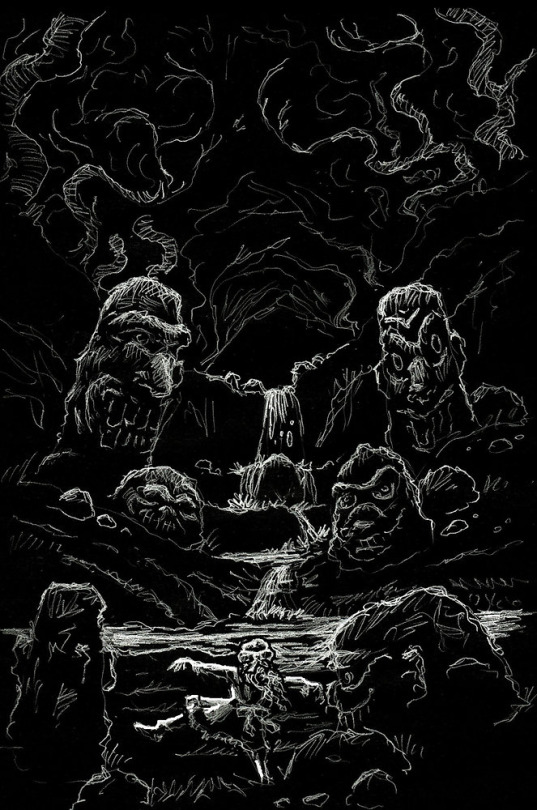
In some cases, these evil troglodytes are usually identified with the mysterious Picts, the pre-Celtic stone age inhabitants of the British Isles. In some cases, they are identified with the Basque people of Spain, best known as the inventors of Jai Alai, and the oldest people in Europe who speak a unique language unrelated to any in the world.
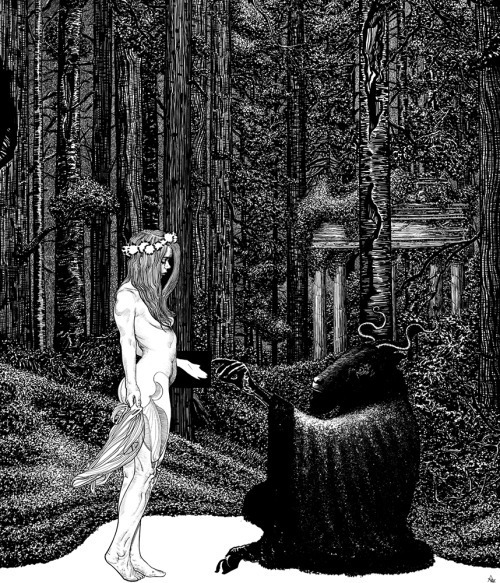
The original codifier of this trend was Arthur Machen, a horror writer who is less remembered than his contemporary, Henry James, but who may be the best horror writer in the generations between Poe on the one end and Lovecraft/CL Moore/Clark Ashton Smith on the other. His story, "the White People" from 1904 (a reference to their strange cave albinism) was a twisted Alice in Wonderland with a girl who is irresistibly attracted to dark pre-Roman stone age ruins and who is eventually pulled underground.
In addition to being a great horror writer, Arthur Machen was a member of the Hermetic Society of the Golden Dawn, an occult organization, and was often seen at the Isis-Urania Temple in London. Many of his works have secretive occult knowledge.
H.P. Lovecraft in particular always pointed out Arthur Machen as his single biggest inspiration, though he combined Machen's dread and occultism with Abraham Merritt's sense of fear of the cosmic unknown, seen in "Dwellers in the Mirage" and "People of the Pit."
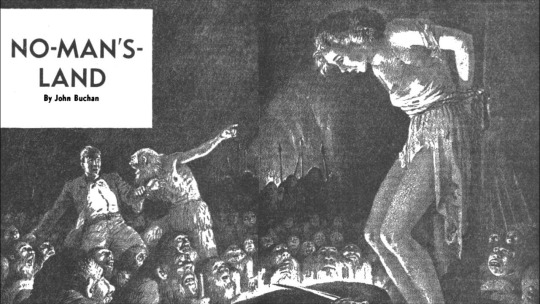
Another and scarier example of this trend would be "No Man's Land," a story by John Buchan, a Scotsman fascinated by paganism and horror, who often wrote stories of horrific discoveries and evil rites on the Scottish moors. He is often reduced to being described as a "Scottish Ghost Story" writer, a painfully reductivist description as in his career, Buchan wrote a lot of thrillers, detective, and adventure stories as well. In later life, he was appointed Governor General of Canada, meaning he may be the first head of state to be a horror writer.
It was Buchan who first identified the cave creatures with the Picts, something that another Weird Tales writer decades later, Robert E. Howard, would roll with in the 1920s.
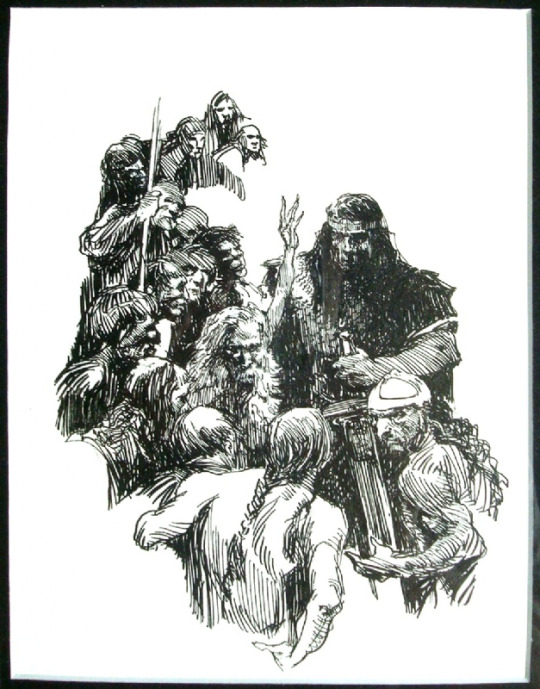
Howard is a very identifiable kind of modern person you often see on the internet: a guy who talks tough, but who was terrified to leave his small town. He created manly man, tough guy heroes like Conan the Barbarian, Kull, and El Borak, but he himself never left his mother's house. It's no wonder he got along well with his fellow Weird Tales writer and weird shut in, HP Lovecraft. With 1920s Weird Tales writers, despite your admiration for their incredible talent, you also can't help but laugh at them a little, a feeling you also apply to a lot of Victorians, who achieved incredible things, but who are often closet cases and cranks who died virgins ("Chinese" Gordon comes to mind, as does Immelmann).
With Howard, his obsession with the Picts and the stone age cave dwelling people of Europe started with an unpublished manuscript where at a dinner party, a man gets knocked out and regresses to his past life in the Bronze Age, where he remembers the earliest contact between modern humans and the original inhabitants of the British Isles, the evil darkskinned Picts. This is a mix of both the "little cave people" story and another cliche at the time, "the stone age past life regression novel," another turn of the century cliche.
Still with the Picts on his mind, Howard would later create Bran Mak Morn, a Pict chieftain, who predated Kull and Conan as his Celtic caveman muscle hero. Howard was of Irish descent and proudly anti-Colonial and anti-British, with his Roman Empire and Civilized Kingdoms as a stand in for the British and other Empires, which he viewed as rapacious and humbug, a view shared by his greatest inspiration, Talbot Mundy. His "Worms of the Earth" gets to the heart of why these little cave people scare us so much: they remind us that we live on land that is impossibly ancient and we don't fully understand at all.
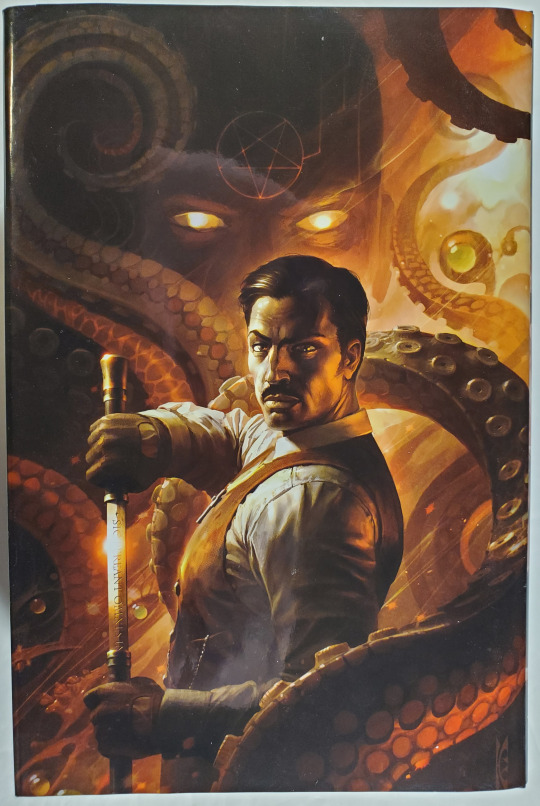
It was another Weird Tales Writer a decade later who wrote one of the last stories about the little hairy cave people of Europe, though, Manly Wade Wellman in 1942. Wellman was mainly known for creating the blond beefcake caveman hero Hok the Mighty set in stone age times, and for his supernatural ghost stories of Silver John the Balladeer set in modern, ghostly Appalachia (like many ex-Weird Tales writers, he made a turn to being a regional author in his later career, in the same way Hugh B. Cave became a Caribbean writer), but Wellman also had a regular character known as John Thunstone, a muscular and wealthy playboy known for his moustache who used his great wealth to investigate the supernatural and the occult. Thunstone had a silver sword made by St. Dunstan, patron of Silversmiths, well known for his confrontations with the Devil.
Most John Thunstone stories featured familiar stories, like a demon possessed seance and so on, but one in particular featured a unique enemy, the Shonokins.
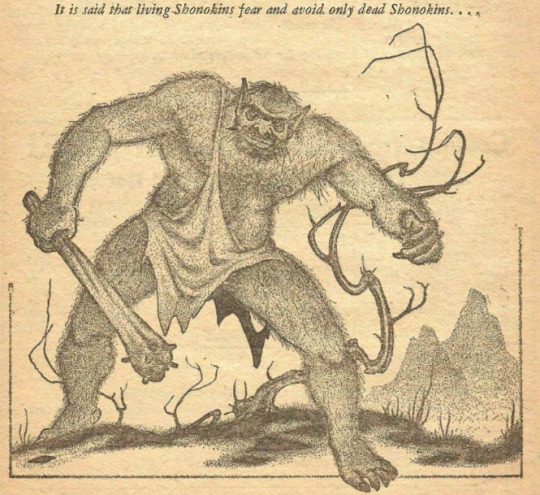
The Shonokins were the original rulers of North America, descendants of Neanderthal man displaced by American Indians. This fear that the land we live is ancient and unknowable and we just arrived on it and don't know any of its secrets is common to settler societies, who often hold the landscape with dread, as in Patricia Wrightson's fantasies of the Australian Outback. It was easy enough to transport the hairy cave people from the Scottish Moors to North America. I suspect that's what they are, a personification of a fear shared in the middle class, that in the back of their minds, that everything they have supposedly earned is merely an accident of history, built by rapacity and the crimes of history, and that someday a bill will come due.
A text page in the May 1942 issue of Weird Tales gives strange additional information on the Shonokins not found elsewhere:
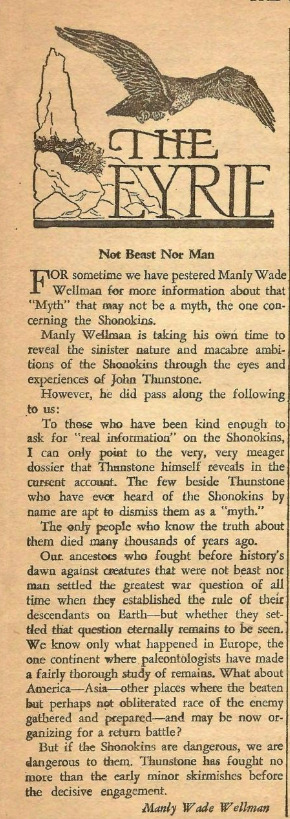
Since then, there have been too many examples of evil cave people who predate Europeans. Philip Jose Farmer's "The All White Elf" features the last survivor of a pre-European people who live in caves. A lot of other fiction of course has featured the Picts, but according to our modern scientific understanding, which describes them as much, much less exotically, as a blue tattooed people not too different and practically indistinguishable from the Celtic tribes that surrounded them, and which they eventually blended into.
454 notes
·
View notes
Text

Don’t stop
#mcr#pulp novels#my chemical romance#gerard way#hang em high#my chem#revenge#digital art#vintage books#mcr pulp#three cheers for sweet revenge#my art#three cheers#revenge era
1K notes
·
View notes
Text
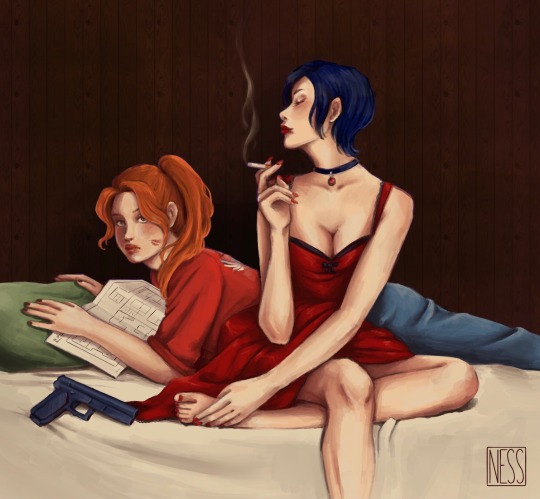
Lesbian pulp fiction novel but make it claireada


The urge to redraw 5 million more of these is insane
#claireada#resident evil#digital painting#fanart#claire redfield#ada wong#pls capcom ada and claire duo for re9#accidentally turned into their re2 versions really want to draw them older next#wlw#pulp novels#digital art#illustration
231 notes
·
View notes
Text
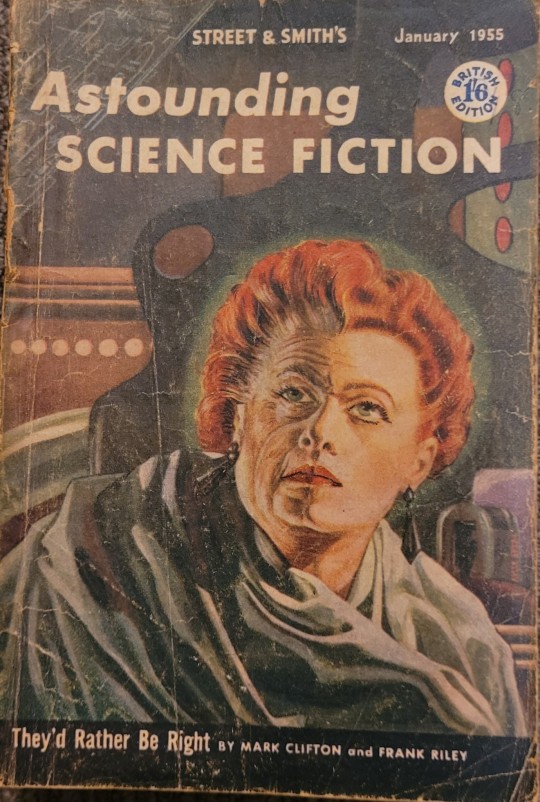




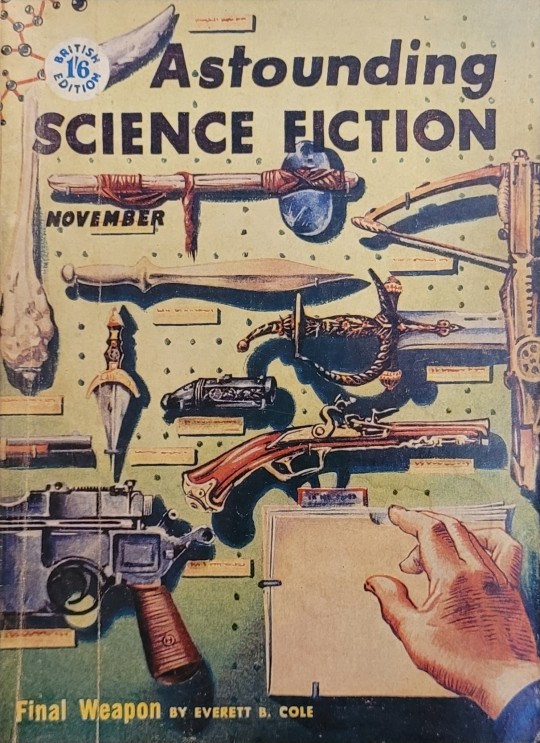
astounding science fiction (british edition) issues from 1955
from my grandfather's sci fi collection :)
#astounding science fiction#analog science fiction#sci fi#50s#retro sci fi#sci fi novels#vintage sci fi#pulp novels#sci fi art#vintage books
548 notes
·
View notes
Text

Happy Valentine's Day!
Do you ever look at a gif from @branzinos and think "dang, that lighting is so beautiful, like a pulp novel cover" and then your brain won't let you rest until you make a thing?
#abbott elementary#barbara howard#melissa schemmenti#work wives#jacob hill#pulp art#pulp novels#watercolor#watercolour
148 notes
·
View notes
Text


1977, art by Sanjulian
#horror fiction#books#reading#vintage paperbacks#horror#paperback books#paperbacks from hell#alligator#pulp novels#horror paperback#pulp art
58 notes
·
View notes
Text
Lesbian literature & Chicago activism: Valerie Taylor letters, 1964-1975

“It seems slightly satirical to wish anyone happiness in this messed-up world but I hang on to a possibly erroneous belief that personal happiness is still possible, or how has the human race survived so much?”
-- Valerie Taylor to Jack Conroy, December 26, 1969
Valerie Taylor (1913-1997) was an activist and novelist, especially prominent in the lesbian pulp genre of the mid-20th century. She used many names over the course of her life, including Velma Tate, which is how she signed off letters to her friend and fellow leftist writer Jack Conroy. Her wit shines through this selection of twelve letters, which range from 1964 to 1975. Common topics include the difficulties of publishing, leftist politics, and tongue-in-cheek responses to “Chick tracts” (Evangelical comics intended to encourage conversion to Christianity), which were seemingly often sent to Taylor by Conroy in order to poke fun at them.
"It will be so cozy in hell–everyone I know there.”
-- Valerie Taylor to Jack Conroy, January 12, 1975
Scholars have described Taylor as a key figure in the history of both pulp literature and Midwestern gay activism.
“As both an open lesbian and a political activist, Taylor is a unique author in the pulp genre. Taylor centers the Midwest in her novels and illustrates both the vibrancy of gay life and the beginnings of gay activism in Chicago in the late 1950s and early 1960s… while they are still certainly pulps and share some of the issues found in the majority of lesbian pulps, she takes control of the genre and uses it to disseminate information to the queer community in Chicago, consistently challenging the standard. Taylor differentiates herself by inserting references to books, spaces and terms to help illuminate the reality of the Chicago gay community. She also provides a critique of police entrapment and bar raids, the legal and psychological standing of homosexuals and, most importantly, she portrays her lesbian characters as distinctly human individuals.”
-- Midwestern farmers’ daughters: heartland values and cloaked resistance in the novels of Valerie Taylor, by Jennifer Dentel
Taylor was one of many leftist authors who kept correspondence with Conroy, who was himself a significant contributor to the “proletarian literature” of the early 20th century. These letters provide us a window into the kind of relationships he fostered as well as Taylor’s humor and drive.
– Quinn Sluzenski, Digital Initiatives Assistant
View Valerie Taylor's letters to Jack Conroy at Newberry Digital Collections
Learn more about LGBTQ+ archives at the Newberry
#valerie taylor#chicago#pulp fiction#lgbtq literature#lgbtq history#gay history#pulp novels#newberry library#libraries#special collections#archives#jack conroy#newberryq#collection stories#pride
41 notes
·
View notes
Text






Pulp novel cover art by Victor Kalin
Personally, I'm a really big fan of the title "Hillbilly Feuding and Loving".
13 notes
·
View notes
Text

'Slow and steady,' said the book, but after so long yearning for him she was going to make it 'fast and furious'!
12 notes
·
View notes
Text
Who thinks the world of Lies of P would make a good steampunk pulp series and P would make a good pulp hero like Zorro, The Rocketeer, or Flash Gordon with Alice being his love interest?
#lies of p#pinocchio#alice madness returns#alice liddell#american mcgee's alice#pulp#pulp novels#steampunk
28 notes
·
View notes
Text
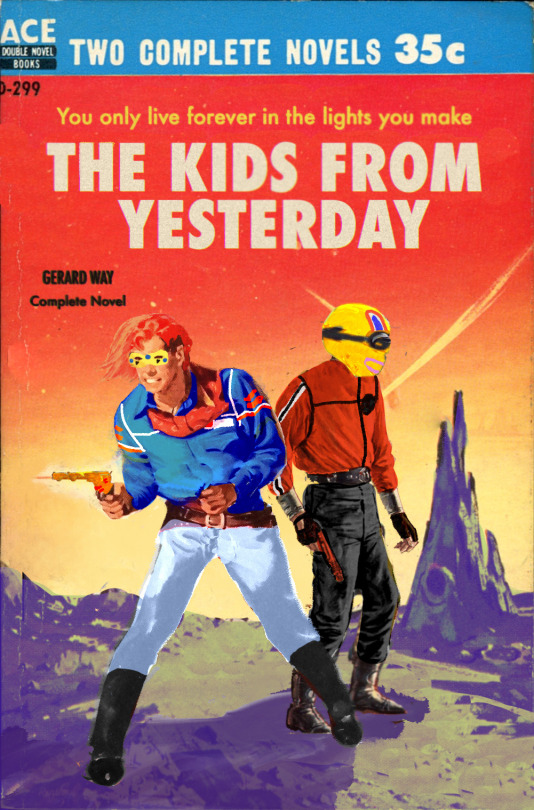
How we feeling today boys
#mcr#gerard way#my chemical romance#my art#my chem#digital art#mcr art#danger days#party poison#kobra kid#the killjoys#tloftk#killjoys never die#pulp covers#pulp fiction#pulp novels#vintage art#vintage illustration#vintage books
765 notes
·
View notes
Text



Acquired 1 through 24 of Jerry Ahern's "Survivalist" series. Pretty standard cold-war-gone-hot fare, but despite people calling them similar to William Johnstone's insane "Ashes" series, this is a franchise that doesn't make you pray for the protagonist's death. It is funny to read the blurbs on the back covers and see how far this series will eventually go, from an insanely-competent if normal guy surviving in Mad Max America and fighting competent-if-normal Soviets, to him being cryogenically frozen for forty years and being revived to fight neo-nazi clone troopers. Also big "The Park Is Mine" vibes from the cover art.
18 notes
·
View notes
Text
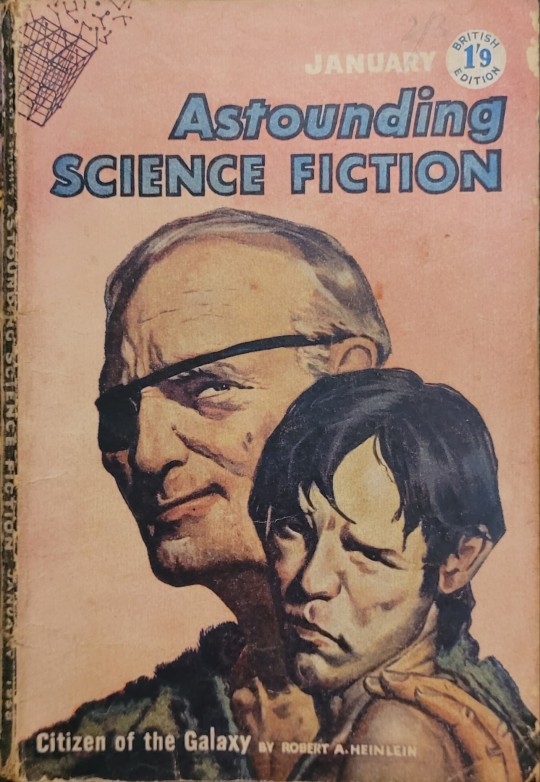
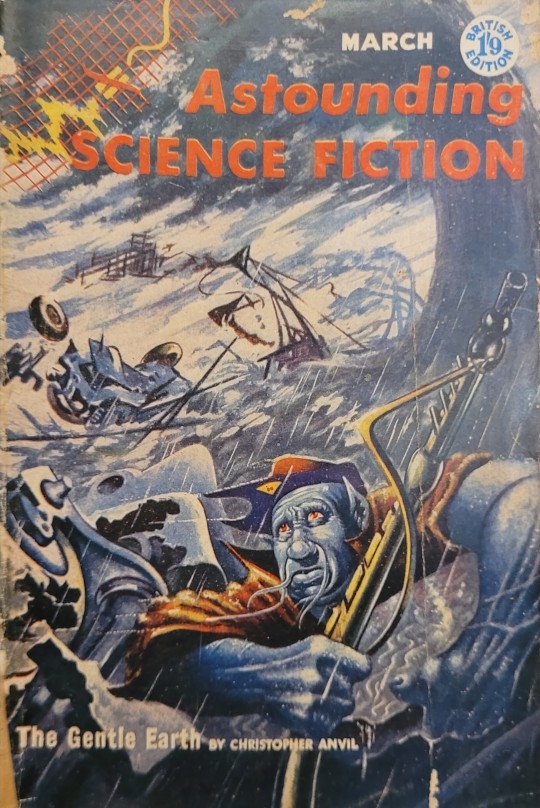
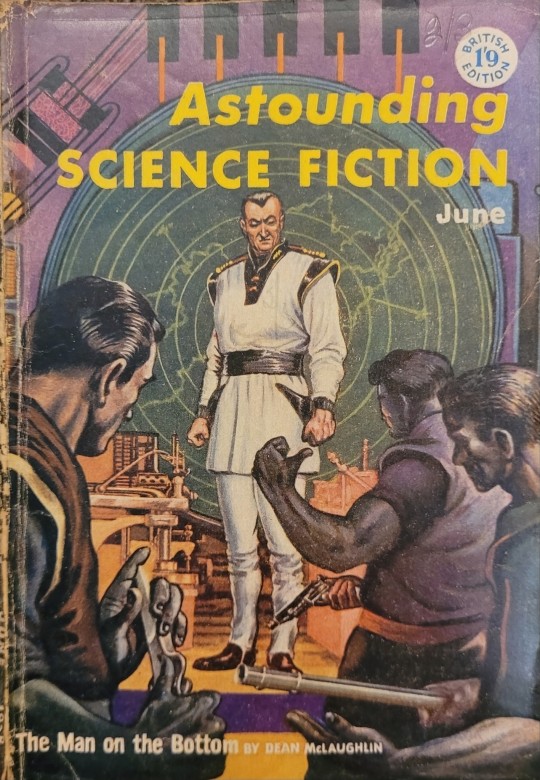





astounding science fiction (mostly british edition) issues from 1958 & 59
the double up of march 1959 is due to the second one being the american edition.
from my grandfather's scifi collection :)
#sci fi#retro sci fi#sci fi novels#vintage sci fi#pulp novels#sci fi art#vintage books#50s#astounding science fiction#analog science fiction#poul anderson
487 notes
·
View notes
Text
"I ripped all her clothes off. She twisted and turned, slow, so they would slip out from under her. Then she closed her eyes and lay back on the pillow. Her hair was falling over her shoulders in snaky curls. Her eye was all black, and her breasts weren't drawn up and pointing at me, but soft, and spread out in two big pink splotches. She looked like the great-grandmother of every whore in the world. The devil got his money's worth that night."
James M. Cain, The Postman Always Rings Twice
6 notes
·
View notes
Text
A Superhero Universe Without Baggage Absurdist Press
So, I've been working on this for a while, and since I've been getting a bit of traction on here, I figured I could show and tell.
This is the writing cooperative I run with my friends. It's called Absurdist Press and it is a literary superhero universe told through individual zine-style issues.
All stories are set in the same world. Characters age and progress in a consistent manner and we try to keep a strict continuity.
We have three stories so far, all available at the link.
#writing#self publishing#zines#superheroes#absurdist press#oc fiction#original fiction#pulp novels#superhero universe#prose fiction#genre fiction
5 notes
·
View notes
Text

George Wilson Able Team #36: Final Run cover art (1988)
18 notes
·
View notes